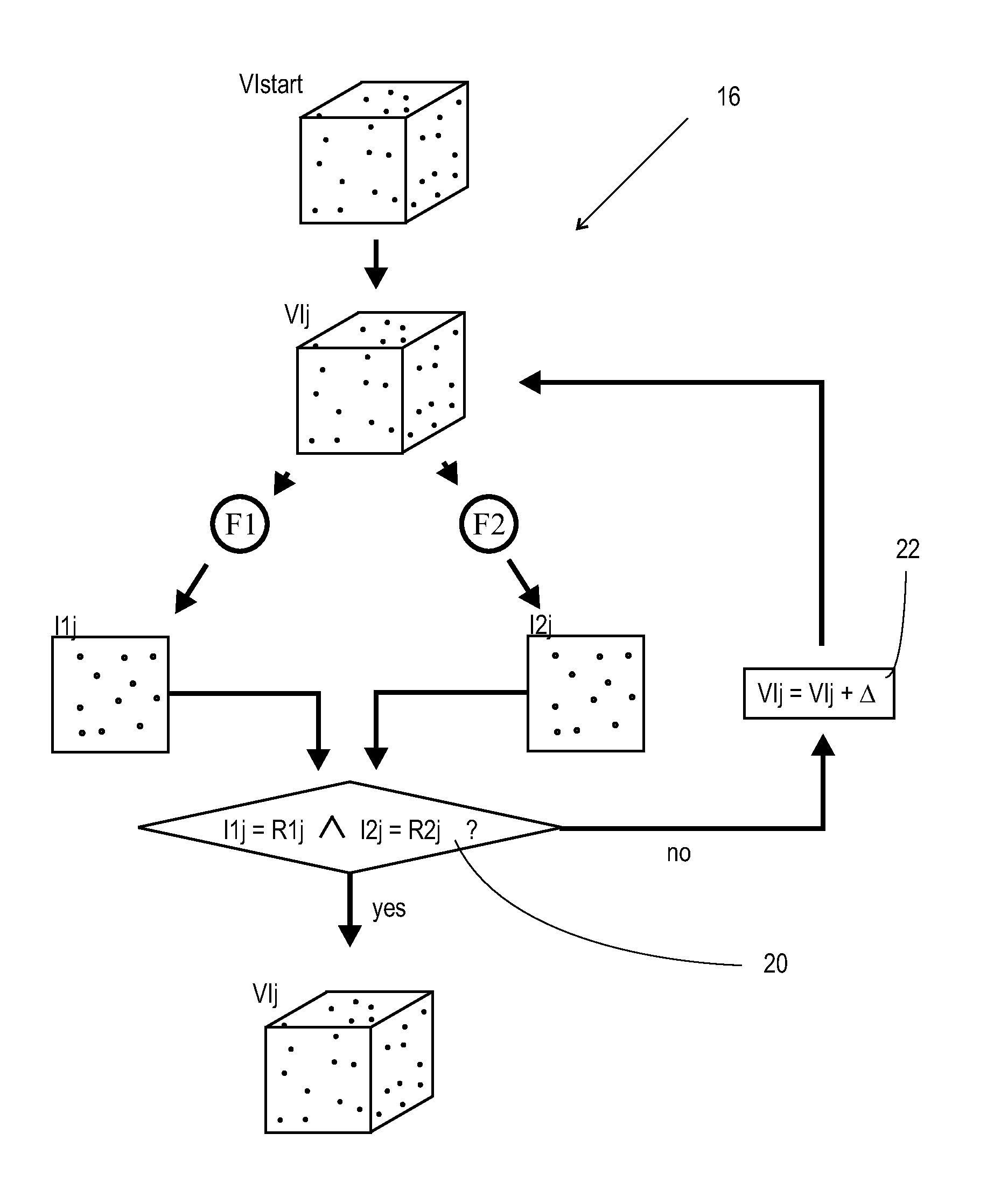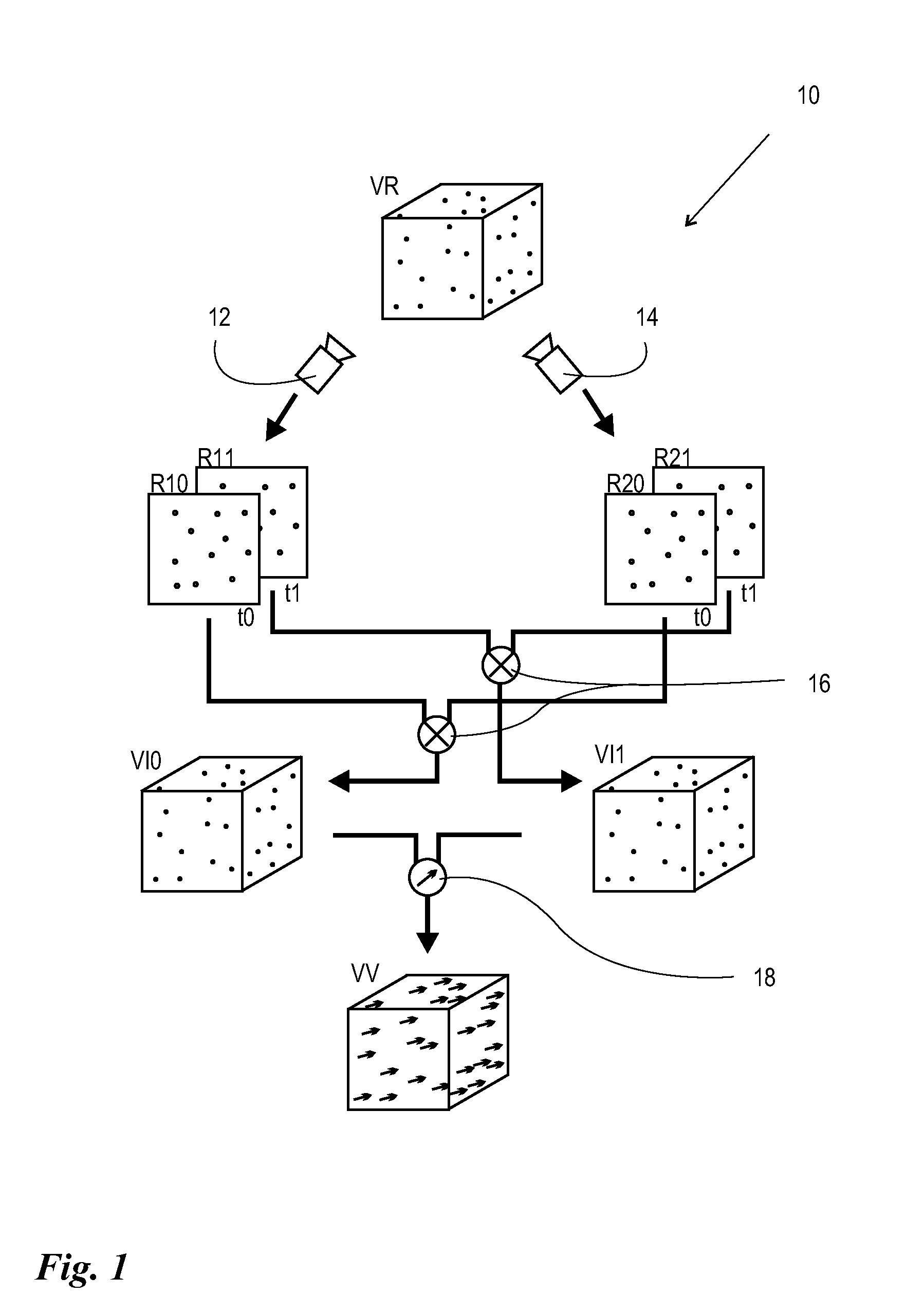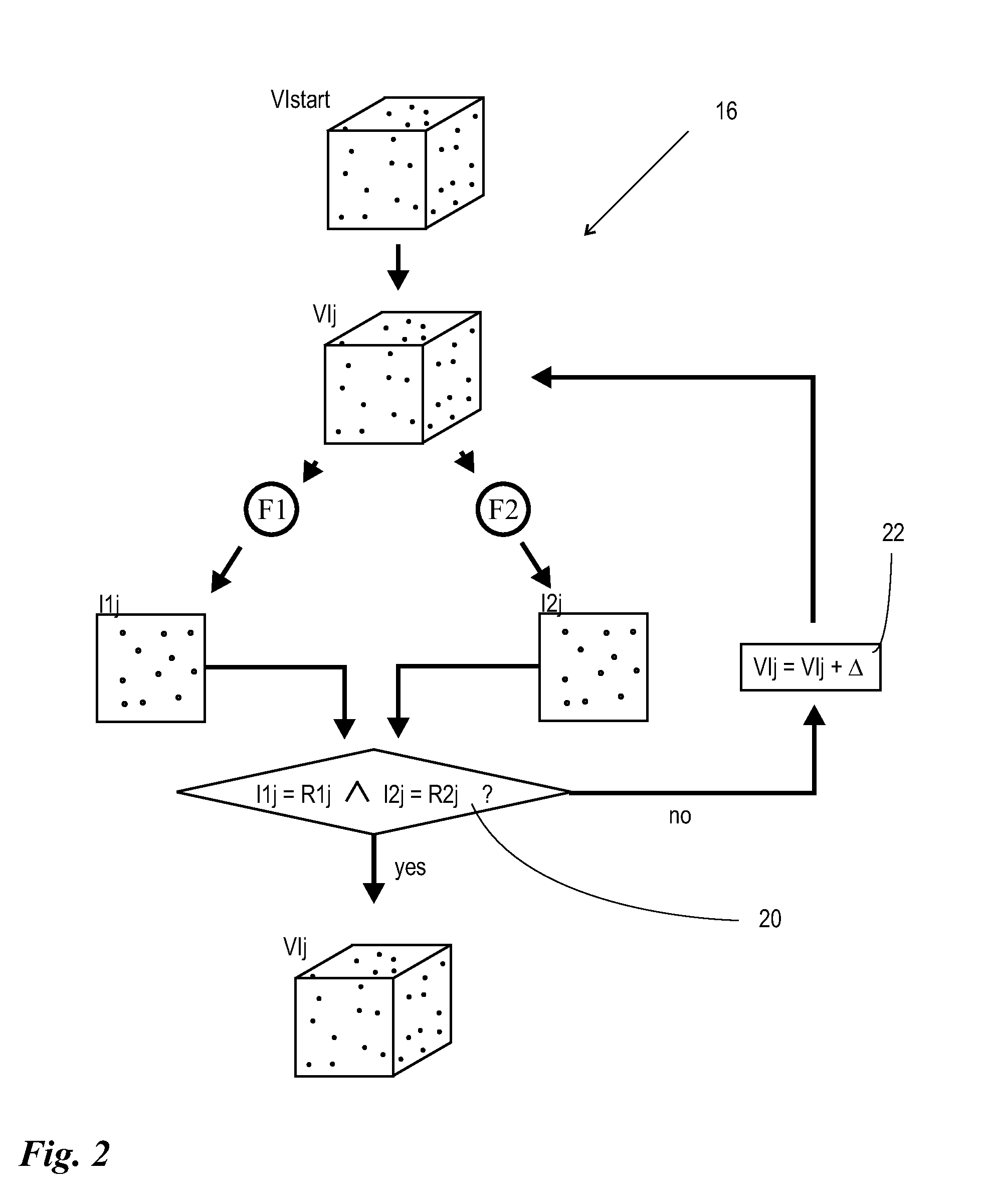Method for determining flow conditions
a flow condition and measurement volume technology, applied in the field of measuring volume flow conditions, can solve the problems of large errors in the determination of 3-dimensional particle positions, inaccurate and faulty determination of 2-dimensional particle positions, and comparatively small particle numbers in the measuring volume, so as to achieve greater displacement vector density and particle density. the effect of density
- Summary
- Abstract
- Description
- Claims
- Application Information
AI Technical Summary
Benefits of technology
Problems solved by technology
Method used
Image
Examples
Embodiment Construction
[0025]FIG. 1 shows a diagrammatic representation of the 3D-PTV method, the generality of which, as depicted, is known by one skilled in the art. The starting point is a real volume VR, which represents a measuring volume, which is flowed through by a fluid which is seeded with optically detectable particles. Preferably fluorescent or reflecting particles are used, which are preferably embodied identically or at least in a similar manner, and the density thereof is adapted in particular to the fluid density. For example, hollow or filled glass or plastic beads or—in particular in gas flows—droplets of liquid, can be used. However, in principle it is also possible to use irregular particles, such as, for example, carbon black particles.
[0026]The measuring volume VR is recorded by a plurality of image detectors 12, 14 to produce real images. In the embodiment shown, two detectors 12, 14 are illustrated. However, it is likewise possible to use more than two detectors. It is necessary fo...
PUM
 Login to View More
Login to View More Abstract
Description
Claims
Application Information
 Login to View More
Login to View More - R&D
- Intellectual Property
- Life Sciences
- Materials
- Tech Scout
- Unparalleled Data Quality
- Higher Quality Content
- 60% Fewer Hallucinations
Browse by: Latest US Patents, China's latest patents, Technical Efficacy Thesaurus, Application Domain, Technology Topic, Popular Technical Reports.
© 2025 PatSnap. All rights reserved.Legal|Privacy policy|Modern Slavery Act Transparency Statement|Sitemap|About US| Contact US: help@patsnap.com



